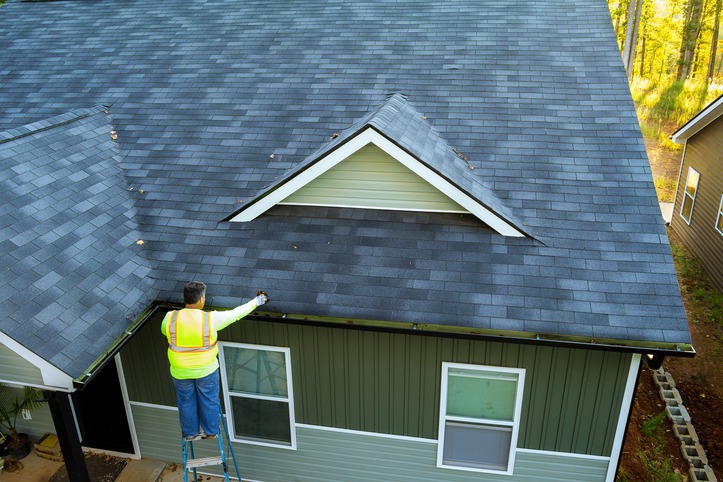
It’s a rainy night, and rather than cozying up with a good book, you’re racing to fetch a bucket to catch the water dripping from your ceiling. Sound familiar? If you’ve ever had a leaky roof, you know it’s no joking matter. Roof leaks can lead to serious water damage, mold growth, and structural issues. But what exactly causes your safe haven to suddenly betray you like this? And more importantly, how can you fix it? Let’s unshroud this dripping mystery and find some solid solutions to keep you and your home dry.
Common Culprits Behind a Leaky Roof
Before we can fix the problem, we’ve got to understand what we’re up against. Several culprits could be responsible for turning your roof into a sieve.
Cracked or Missing Shingles
High winds and heavy storms are notorious for sending shingles flying. If you can safely get a view of your roof, check for gaps or cracks where water might make its way in.
Bruised or Cracked Flashing
Flashing is essentially the sealant between the joints in your roof, most notably around chimneys, vents, and skylights. Over time, it can crack or corrode, leaving room for water to creep in.
Compromised Seals
Around those same features—chimneys, vents, and the like—there are seals that can degrade over time. If they fail, water has a first-class ticket into your home.
Clogged Gutters
If water can’t flow away from your house, it’ll just sit on your roof, waiting for an invite inside. Keeping gutters clear is vital to roof health.
Improperly Installed Skylights
While skylights are beautiful, if they’re not fitted correctly, they can be a source of leakage.
Signs You’ve Got a Leak
Aside from the obvious drips, there are other telltale signs that your roof might be leaking. Keep an eye out for:
-
Water spots on your ceiling, especially after rain
-
Peeling paint around skylights or vents
-
Mold or mildew in areas that should otherwise be dry
-
An increase in your utility bills due to escaping heat
DIY Repairs for the Ambitious Homeowner
So, you’ve spotted a leak, and you’re ready to roll up your sleeves and tackle it head-on. Here are some steps you can take before surrendering your paycheck to a professional.
Patching up Shingles
If you’re dealing with a few cracked or missing shingles and you’re comfortable with heights, you might be able to replace them yourself. Make sure to purchase matching shingles, remove the damaged pieces, and secure the new ones properly.
Sealing the Flashing
For minor cracks in the flashing, roofing cement might be all you need. Apply it generously to seal up any gaps that could be letting water through.
Unclogging the Gutters
This might be less fun than it sounds (if it sounded fun at all), but cleaning out your gutters is a key line of defense against water damage. Make sure to clear them out regularly, particularly after storms.
Re-sealing Vents and Skylights
If it seems like the seals around your vents or skylights have given up the ghost, you can reapply sealant—just make sure you’re using the right kind for your particular situation.
When to Call in the Professionals
Let’s face it, our expertise has limits. And when water’s pouring in, sometimes you’ve got to swallow your pride and call for backup. Here’s when to hit up the pros:
For Major Structural Damage
If it looks like your roof has sustained serious damage, don’t attempt to fix it yourself. You could do more harm than good—or worse, injure yourself.
When You Can’t Identify the Source of the Leak
Roof leaks can be deceptive. Water doesn’t always drip straight down but can travel along roof panels or lumber in the attic. If you can’t track down exactly where the water’s coming in, a roofing company in Portland may be your next call.
If You’re Unsure About DIY Repairs
There’s no shame in playing it safe. If you’re not 100% confident in your DIY repair skills, it’s worth getting a professional to do it right the first time. In fact, for homeowners considering a full upgrade, opting for a new roof installation in Portland might not just solve your current leak woes but also prevent future ones, thanks to up-to-date materials and modern installation techniques.
Skylight or Chimney Issues
These can be particularly tricky to fix correctly, so if the issue is centered around these features, save yourself the headache and call for help.
How to Prevent Future Leaks
Now that we’ve plugged the current leak, let’s make sure it doesn’t happen again. Here are some preventative measures you can take:
-
Regularly inspect and maintain your roof
-
Replace any worn shingles or sealants before they fail
-
Keep those gutters clean and clear
-
Ensure proper attic ventilation to avoid condensation-related issues
-
Schedule an annual inspection from a professional to catch potential issues early
Remember, if you’re considering giving your roof an overhaul, seeking out quality reroofing services might be a worthy investment for peace of mind.
The Bottom Line
In closing, a leaking roof can be a significant stressor on any homeowner’s list of woes. But with keen observation skills, a dash of DIY spirit, and knowing when it’s time to call the professionals, you can transform this soggy story into one of triumph over the elements. Maintain your roof, know the signs of trouble, and don’t hesitate to seek help when needed. After all, our homes are our sanctuaries, and they deserve to be kept in tip-top shape—starting from the top down.






